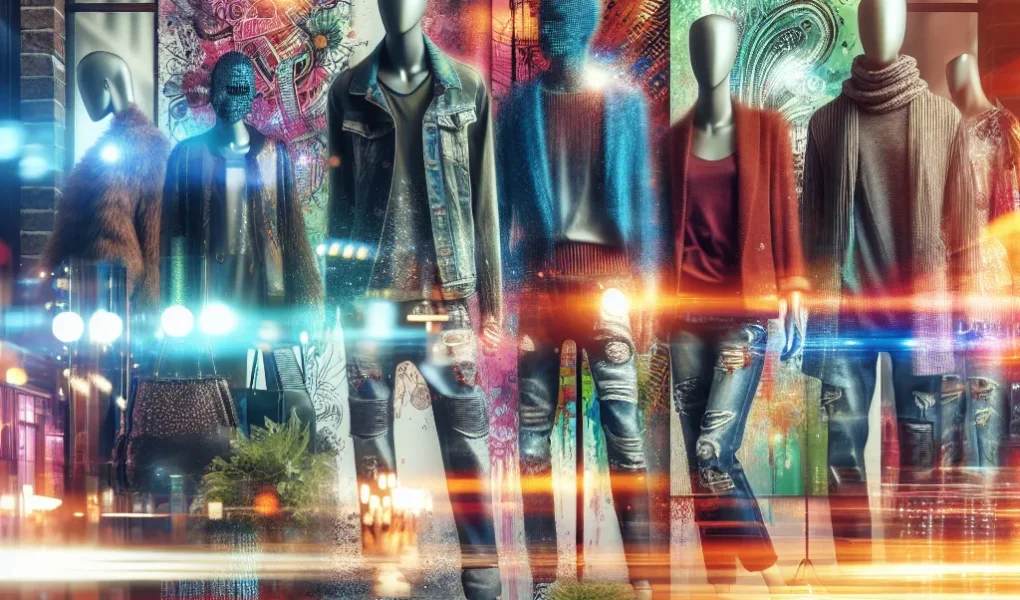The History of Street Style: From Subculture to Mainstream Fashion
Street style has become a significant influence on the world of fashion, shaping trends and dictating the way people dress. However, the history of street style dates back to the emergence of various subcultures and their unique sartorial expressions. One of the earliest manifestations of street style can be traced back to the rebellious youth subcultures of the 1950s and 1960s, such as the beatniks, mods, and rockers. These subcultures rejected mainstream fashion, opting instead for personalized, anti-establishment looks that reflected their non-conformist attitudes.
As these subcultures gained visibility, their fashion choices began to seep into the mainstream, laying the groundwork for the eventual integration of street style into popular fashion. The 1970s and 1980s witnessed the global rise of punk and hip-hop cultures, both of which significantly influenced street style with their avant-garde and urban aesthetics. The DIY ethos of punk and the bold, expressive clothing of hip-hop culture further propelled street style into the forefront of fashion.
By the late 20th century, street style had firmly established itself as a driving force in fashion, with designers and brands actively drawing inspiration from the streets. The evolution of street style from a symbol of counterculture to a driver of mainstream fashion reflects its enduring relevance and impact on the industry. Today, street style continues to evolve and shape fashion trends, showcasing the ongoing fusion of subcultural elements with mainstream sartorial sensibilities.
Street Style Icons: How Influencers Are Shaping Fashion Trends
Street style has become a powerful influencer in the world of fashion, with street style icons playing a significant role in shaping current fashion trends. These influencers, often found in urban settings, have a keen eye for mixing high-fashion pieces with everyday casual wear, creating looks that are both aspirational and accessible.
What sets street style icons apart is their ability to inspire and influence the broader fashion landscape. Their distinctive, individualistic approach to style resonates with a wide audience, leading many to emulate their looks and adopt their fashion choices. Social media platforms like Instagram have provided a global stage for these street style icons, allowing them to showcase their unique perspectives and connect directly with their followers.
From oversized blazers to chunky sneakers, street style icons have propelled numerous trends into the mainstream, redefining the traditional boundaries of fashion. Brands are increasingly collaborating with these influencers, recognizing their ability to drive consumer demand and set new style directions. The democratization of fashion through street style has blurred the distinction between high-end and streetwear, resulting in a fusion of luxury and urban sensibilities.
In essence, street style icons wield significant influence in shaping fashion trends, demonstrating the power of individual expression and the impact of organic, grassroots movements on the global fashion industry.
The Global Impact of Street Style: How Different Cultures Influence Fashion Trends
Street style has become a powerful force shaping fashion trends around the world. One of the most intriguing aspects of street style is its ability to reflect the diversity of global cultures and their influence on fashion. From the eclectic and vibrant street fashion in Tokyo to the effortlessly cool and edgy styles of New York City, different cultures bring their own unique flair to the world of fashion.
Japanese street fashion, for example, has had a significant impact on global trends with its emphasis on bold colors, innovative layering, and avant-garde silhouettes. Harajuku, a district in Tokyo, has garnered international attention for its fashion subcultures, which often blend elements of traditional Japanese attire with modern streetwear sensibilities. The result is a fashion landscape that is both visually striking and deeply rooted in Japanese cultural identity.
Similarly, the street style of cities like Paris, London, and Seoul offers a glimpse into the fashion preferences and sartorial expression of their respective cultures. Parisian street style exudes an air of timeless elegance and sophistication, while London’s fashion scene embraces a more rebellious and eclectic spirit. In Seoul, street fashion is influenced by the country’s dynamic youth culture, blending elements of K-pop aesthetics with high-street fashion trends.
Furthermore, the rise of social media and digital platforms has facilitated the global spread of street style, allowing fashion enthusiasts from diverse cultural backgrounds to showcase their unique interpretations of trends. Instagram, for instance, has become a breeding ground for street style influencers who offer a melting pot of fashion inspiration from around the world, further blurring the lines between regional fashion norms.
In conclusion, the global impact of street style on fashion trends is undeniable, as it offers a kaleidoscopic view of cultural influences and sartorial creativity. By embracing the diversity of street fashion from different corners of the world, the fashion industry continues to be enriched with fresh perspectives, innovative aesthetics, and a celebration of global cultural exchange.



